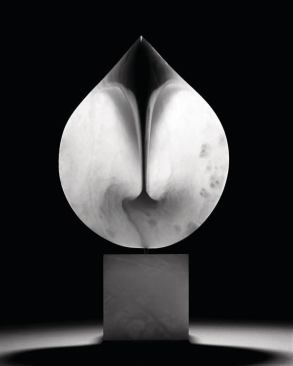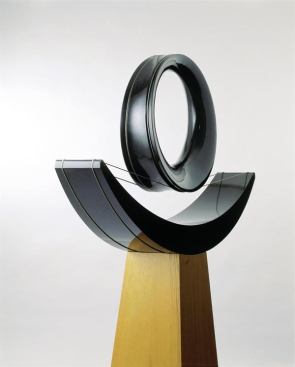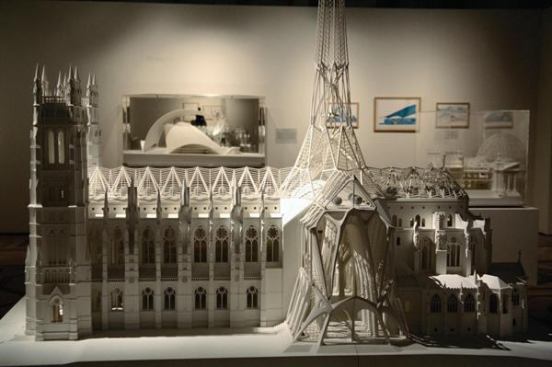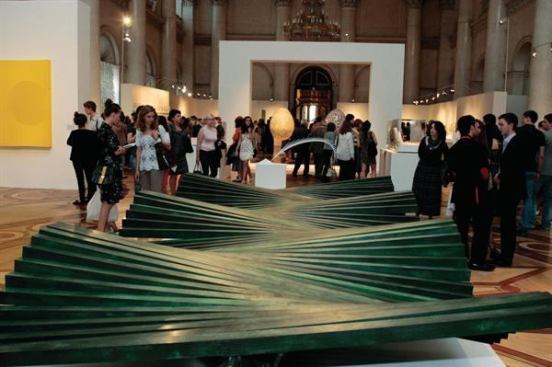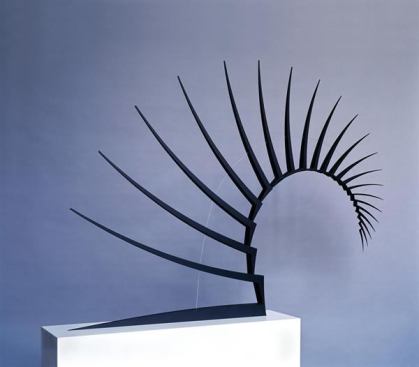Courtesy Santiago Calatrava LLC
“Pure Geometry,” a sculpture from Santiago Calatrava’s exh…
For example, we talked briefly about how he justifies some of his complexly configured, long-span structures, such as the beautifully shaped Liege-Guilleman TGV Railway Station in Liege, Belgium, completed in 2009. The station’s soaring, visually powerful column-free span did not need to be completely column-free. He explained that such structures can be justified in part through savings realized by eliminating columns, thereby offsetting the extra expense attributable to roof system complexity. This explanation may convince clients. But architects know that shorter spans with intermediate columns generally cost less than elaborate, long-span roof structures, especially ones that move.
Calatrava stretches credibility when he offers economic justifications for his exotic, technologically sophisticated designs. Any competent civil engineer could design a less expensive, more structurally efficient bridge than a Calatrava bridge. But not any engineer can make a Calatrava—design imagery that has become synonymous with his name. Likewise, given the same site and building program as Calatrava, any competent architect could design a more sustainable project—being green is not a high priority for Calatrava—costing much less and functioning as well as a Calatrava building. But it would not be a Calatrava.
The Quadracci Pavilion addition to the Milwaukee Art Museum, a model of which is in the Hermitage exhibit, demonstrates the costs and benefits of a Calatrava. Designed and built at the edge of Lake Michigan between 1994 and 2001, the pavilion has become an icon for the city. Superimposed on top of the pavilion’s sloping glazed roof is a movable sunscreen, known as the Burke Brise Soleil, a curved exoskeleton emulating a bird’s paired wings. Comprised of 36 fins and weighing 115 tons, each wing is hinged on an inclined, spine-like axle along the roof centerline, and the two wings can rotate and swing upward. Picture-postcards of the pavilion typically show the wings lifted or in motion through time-lapse photography. The extra cost of this extraordinary sunscreen system undoubtedly ran to seven figures; an equally effective method of solar control would have cost orders of magnitude less. And yet the Quadracci Pavilion’s value to Milwaukee is priceless.
Calatrava is on firmer ground when he sticks to poetic and aesthetic justifications for his work. Artistry of boldly expressed, three-dimensional form, of kinetic composition offering implied or actual movement, is what he sells successfully. Every remarkable Calatrava bridge or building is unfailingly a giant sculpture rendered in steel, concrete, and glass, and each manifests his personal design philosophy. In fact, seeing the Hermitage exhibition helps to illuminate that philosophy better even than visiting one of his projects. Collectively, the models reveal his primary design motifs and constructional vocabulary.
